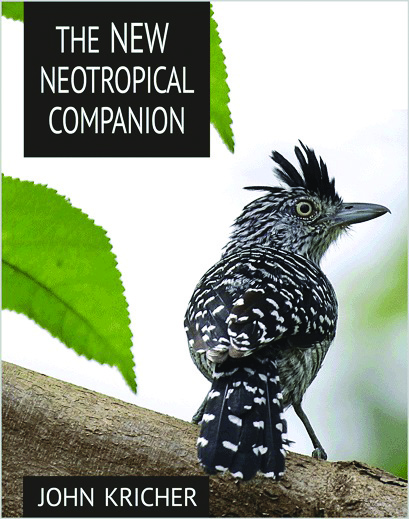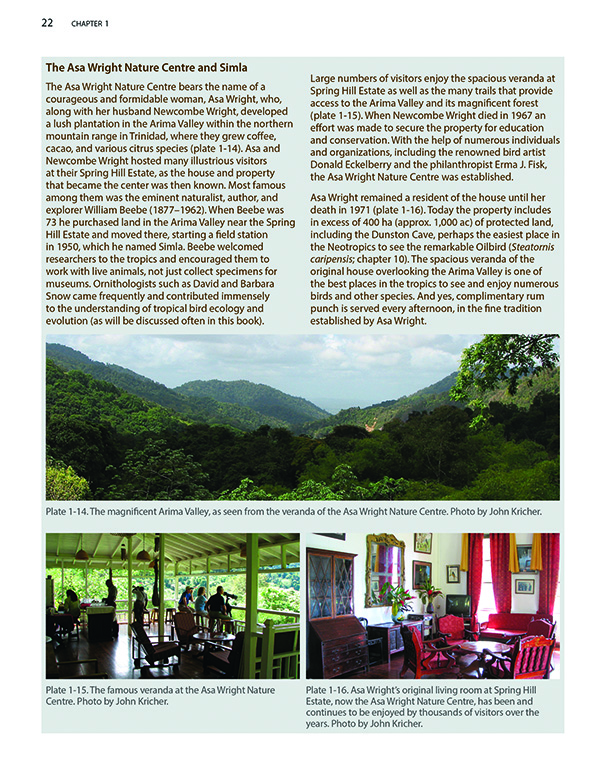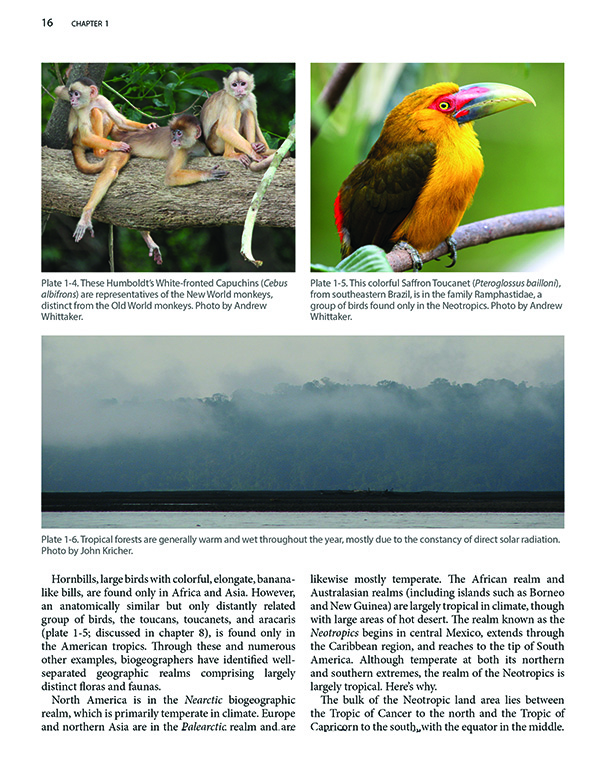The New Neotropical Companion
 The New Neotropical Companion by John Kricher (Princeton University Press, New Jersey, 2017).
The New Neotropical Companion by John Kricher (Princeton University Press, New Jersey, 2017).- 448 pages, 18 colour illustrations, numerous colour photos.
- ISBN 9780691115252. Pbk, SRP £27.95. Bookshop: £25.95.
We are all scientists. Every birder should have an inner ecologist who doesn’t just want to know ‘what’, but also ‘why’ and ‘how’. We are always looking for patterns, watching behaviour and exchanging knowledge.
For those who have been or plan to go to the American tropics, author and Professor John Kricher will guide you through the realm with his book The New Neotropical Companion, helping you to both sharpen and enlighten your understanding of the region’s spectacular biodiversity.
The first edition of this book was published in 1989 in a very compact portable format, and was a huge success at that time. Given the leaps and bounds in knowledge in the last three decades, we now have a weightier volume of more than 400 pages of exciting insight.
Written for a non-academic audience, the text is rich and easy to follow and lavishly illustrated to help visualise concepts like speciation, mimicry, forest succession and so on, all without losing scientific rigour. These different components are separated into 18 chapters that range from climate to nutrient recycling and evolution, walking you through the steps that explain the origin of the region’s mega diversity and why it has intrigued so many people. In the last chapters, Professor Kricher addresses a critically important subject: how humans have changed the landscape, putting in harm’s way many unique habitats and species.
The book is far from being a guide to the plants and animals, but it will give you a lot of tips and tricks to identify general groups, what you might expect to find in habitats including flooded and terra firme forests, rivers, mountains, savannahs and so on. Birders will relish a full chapter dedicated to all things avian, and which serves as a primer for those wanting to understand the ecology of Neotropical specialities such as trumpeters, toucans, barbets, jacamars and more.
As a Brazilian researcher, working for years in Amazonia, I still found this book highly useful. It is full of interesting examples of well-known terms like co-evolution illustrated with examples that I didn’t know or hadn’t noticed before, such as the relationship between heliconid butterflies and passion flowers and how insectivorous birds drive invertebrate evolution. After reading this book, I can’t wait for my next trip to the Neotropics!



